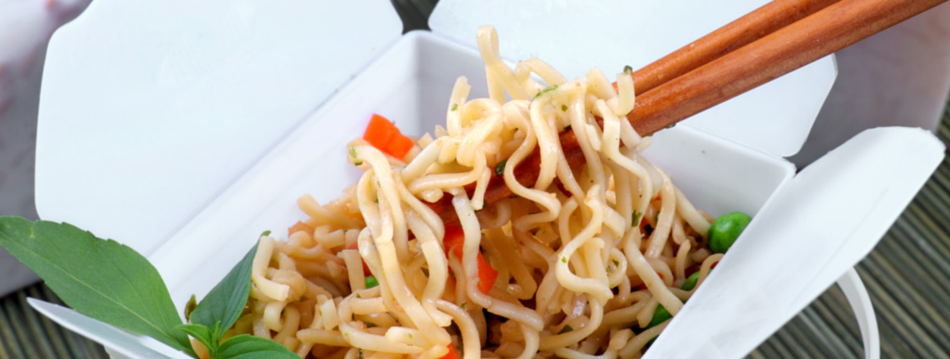.jpg)
We all make cooking mistakes, and if you learned to cook at home (which is where most people learn) it’s likely you learned to do things the way your mom (if that’s who taught you) did them, and she the way her mother and grandmother did… If you were fortunate to be from a family of great cooks you’re lucky, and at an advantage over most people. A lot of best practices in the kitchen are common sense, but some less obvious. If you were taught to do something a certain way though, that will likely trump common sense…
In his great book Outliers Malcolm Gladwell talks about the 10,000 hour rule, the theory that mastery of anything takes 10,000 hours of practice. That’s the equivalent of five years of full time work. Chances are good that in that 10,000 hours are plenty of hours spent fixing errors and learning how to avoid them. I have certainly put in well over 10,000 hours, and still make plenty of mistakes.
This list is more about getting the best results from your ingredients
- Measuring dried herbs into the sauce: Dried herbs are great—even preferable for anything that will cook for a while; marinara sauce, meatballs or meatloaf, roasts, stews, and braises. Before adding dried herbs rub them in your hands to release their natural oils, and ‘wake’ them up. You’ll also create some new surfaces to expose to the liquid. Unless you use them frequently buy dried herbs in small quantities. They don’t last forever, and before you use them rub small amount in your hands, and check the scent, if they smell off, or flat, or barely at all, it’s time to discard them.
- Adding fresh herbs too early: Fresh herbs are wonderful, and most should be added as close to serving as possible. herbs like rosemary, oregano, lavender, and thyme are more hardy and can stand up to long cooking times. Soft leaf herbs like basil, sage, chervil, cilantro, parsley, dill, mint, chives, are more delicate, and their flavor won’t last if they’re cooked for too long. To cut herbs like basil and sage, roll the leaves into ‘cigars’ and slice into thin ribbons, call chiffonade. These herbs will bruise and get discolored if you chop them.
- Adding wine or spirits too late, or dangerously: Wine and spirits add another layer of flavor, but they need cooking time for the flavors to soften and deepen. Adding wine at the last minutes may give your sauce a harsh flavor, even if the wine is really good. When adding wine or spirits to a pan sauce, remove the pan from the heat before adding, to prevent them flaming up, even if you intend to let the sauce flame. To flambé a sauce, add the wine to the pan off the heat, then put it back on the burner, and gently tip it away from you until the flame catches the alcohol on fire, then step back and allow the alcohol to burn off, which won’t take long.
- Draining your pasta: Always save some of the cooking water (about 1-2 cups) before you drain the pasta. This water is starchy and salty and will add body and flavor as well as thicken your sauce. Add it a little at a time. If you’re going to be making a cold dish with the pasta, add ice water to the cooking water before you drain the pasta, then run cold water on it, and toss it with some oil or the dressing you’ll be using to keep it form clumping.
- Overcooking green vegetables: The best way to cook green vegetables and keep their colors bright and their texture crisp is to blanch them. To do this properly put the vegetables into rapidly boiling salted water (you can add a pinch of baking soda which will help balance the PH of the water). Boil briefly— a minute or two depending on the vegetable, then immediately shock them by plunging them into a bowl of ice water. To serve toss quickly in a pan with a bit of oil, butter, sauce, stock,or cooking spray (if you must).
- Making lumpy sauces and gravies: Never add flour directly to a sauce or gravy! The classic way to thicken sauces is to use a roux, a mix of fat and flour that has cooked to remove the floury taste, and to create some color, a blond roux is very light, a medium roux is a golden brown, and a dark or black roux (used for gumbo). All of these are a result of cooking time. The roux is stirred into the sauce, and constant whisking will keep lumps from forming, though if you do get lumps you can just strain your gravy. Other ways to thicken are using a cornstarch (or arrowroot) slurry, mix together equal parts cold water and cornstarch and add to simmering sauce, stirring constantly, it will thicken much faster than using a roux! You can use egg yolks, but this is the most difficult, as you can go from perfect to scrambled eggs in a split second. You can also just reduce the sauce, which takes time, and do not season until the sauce is reduced or it will be too salty.
- Using the wrong amount of oil to fry: There are three ways to fry; sautéing which uses a small amount of fat, pan frying, and deep frying. Of these, pan frying takes the most precision; you want the fat to reach only halfway up the item you are frying, or the center of the cutlet (or fish) will be overcooked as it will get cooked twice. With all these methods one of the most common mistakes is overcrowding the pan. This will lower the temperature of the fat (and that creates greasy, soggy fried food) and it will not leave room for the bubbles of water to evaporate fast enough and you’ll steam your food. If you can fit six items in your pan, fry five. To sauté corrrectly, you need something that is both tender, and thin enough to cook quickly.
- Slicing meat in the wrong direction: Before you carve your roast, or turkey, take a look at how the grain is running, then cut across, not along the grain. The old image of Dad standing over the turkey slicing white meat off the bird are lovely, but to cut the breast meat correctly you should remove it from the bird, then slice the breast across into medallions not long pieces which will be stringy. Some meats can be tricky, but in general look at the meat as a rectangle and slice the way that will create shorter pieces.
- Using raw nuts: If you want that deep, nutty flavor you need to toast nuts before you add them. Not every recipe will advise you to do this, but my practice and advice is to do it anyway. You can do this in the oven or on the stove. Either way give this your full attention as it goes quickly, and they burn easily.
- Cooking cold meat; When you’re going to cook meat using a quick method like grilling or sautéeing let your meat come to room temperature first. If the meat is cold it will take so long for the internal temperature to get to where you want it, the outside can burn. (Don’t let the meat sit out for more than one hour, but that should be plenty of time).
Is there something you often have trouble with, or a question you’d like explained, let me know and I’ll answer it. Chances are if you’re having a problem, or a recurring issue so do a lot of other people! I’d love to do a post based on YOUR questions!






.jpg)





Anna Belle - I’m happy to say that we’re doing most of it right – esp. #4 pasta water! I’ll have to try rubbing dried spices in my hand next time – I use dried rosemary a lot with potatoes.
nrlowell@comcast.net - Anna, I just started saving my pasta water, and love what it does for the sauce!
I love dried rosemary, that and dill are my favorite dried herbs.
Thanks
Rhonda - I love reminders like this! Sometimes bad habits start to creep in.
Do you have any favorite recipes using lemonbalm? I have a plant that’s going insane!
nrlowell@comcast.net - Rhonda, I have never used lemon balm… I think it would be good in places where you’d use mint, and maybe in iced tea (my favorite beverage!)
Christy@SweetandSavoring - Oh my gosh, this is so helpful! Thank you for this- I feel like I’ve been trying to experiment more cooking-wise, but I needed these tips. I put my herbs in too early! Garlic, too- things never taste as garlicky as I think they should.
And oh yes, I love toasted nuts! 🙂
nrlowell@comcast.net - Christy, thanks for the comment! Garlic is also something that you need to saute in fat to get the most flavor, just dropping it in to soup or sauce won’t get you much. You might also try roasting a bunch of garlic and adding that for a deeper less harsh flavor. Keep cooking!!
Carolann Iadarola - Love this list! Making gravy and avoiding those lumps is always a challenge! Malcolm Gladwell is one of my favorite authors…great book. I had forgotten about the rule….awesome reminder!
nrlowell@comcast.net - Carolann, I think sauces and gravies can be the most challenging things to make. Definitely a task that needs time and attention for a good outcome.
Thanks
Peggy Gilbey - Great Tips.
nrlowell@comcast.net - Thanks Peggy, great to hear from you!
lindsay gill - great list! so helpful!
nrlowell@comcast.net - Thanks for the feedback! Writing these helps me remember too!
2 Groovy Moms - I’m a pretty bad cook already, but #4 and #5 are really helpful! I’ll try it (and hope I don’t mess up)
Fall Into a Bowl of Soup - Chefs Last Diet - […] all spices, curry is fat soluble, which means, that to get the most flavor from it you need to sauté it in some […]
Ketchup and Other Sauce » Chefs Last Diet - […] is reserved for professionals, or sure they will mess it up, but making sauce isn’t hard, and making gravy is even easier. As much as I love a well crafted sauce, there’s not much flavor-wise that can […]
Soup Weather or Not » Chefs Last Diet - […] can toast a little in the hot fat, then any other ingredients including stock/broth (except fresh herbs), and any cream or milk products. Because this is a potato soup I chose to use a food mill rather […]